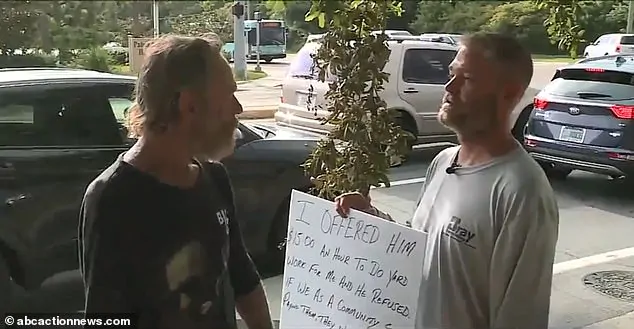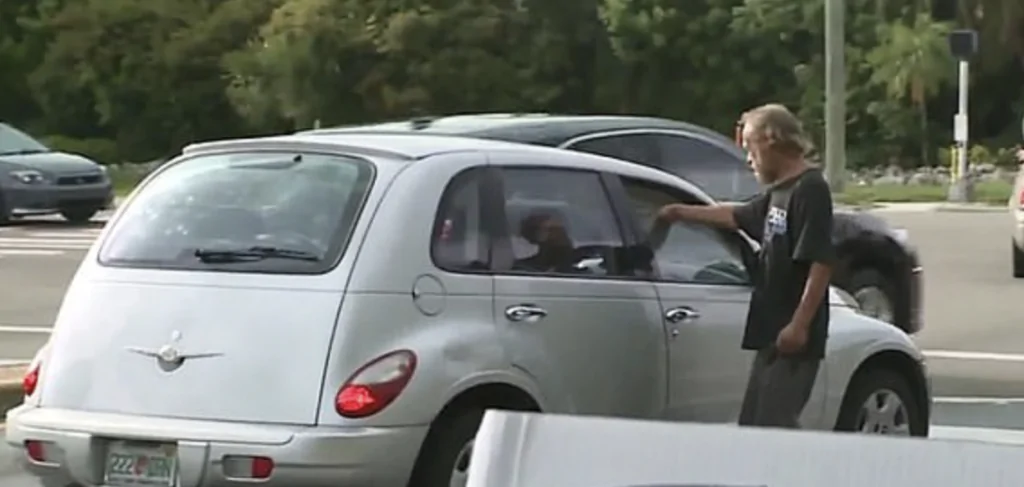Ryan Bray, a compassionate individual, has always sought to make a meaningful difference in his community. One Sunday, he encountered a familiar sight: a panhandler on the street corner, begging for change. Moved to offer more than just spare coins, Bray proposed an unconventional solution.
Instead of handing over money, Bray offered the man a job with his family business at $15 per hour. However, the beggar’s response was shocking – he rejected the offer, preferring to continue begging. Bray’s attempt to empower the man was met with hostility, revealing a deeper issue.

The beggar’s reaction sparked Bray’s determination to address the underlying problem. He created a sign that challenged the panhandler’s choices and returned to the street corner to share his message. Bray’s bold move aimed to raise awareness about the consequences of enabling panhandling.
The homeless man later disputed Bray’s account, claiming he never offered a job and that every coin counted in his struggle to escape life on the streets. Bray stands firm, insisting his intention was genuine.
This encounter ignited a larger conversation. Bray’s sign urges passersby not to give money to beggars, encouraging the community to rethink their approach. By withholding financial support, Bray believes these individuals will be compelled to seek alternative solutions.
Bray’s initiative has sparked debate, highlighting the complexities of addressing homelessness. While some view his approach as insensitive, others see it as a necessary call to action.

As Bray continues to hold his sign, he remains resolute in his mission to challenge the status quo. His goal is not to shame individuals but to inspire systemic change. By encouraging the community to rethink their responses to panhandling, Bray hopes to create a more sustainable solution for those struggling on the streets.
This bold response has ignited a crucial conversation, prompting us to reexamine our role in addressing homelessness. Will Bray’s initiative inspire a new wave of community-driven solutions, or will it fuel further controversy? Only time will tell.


